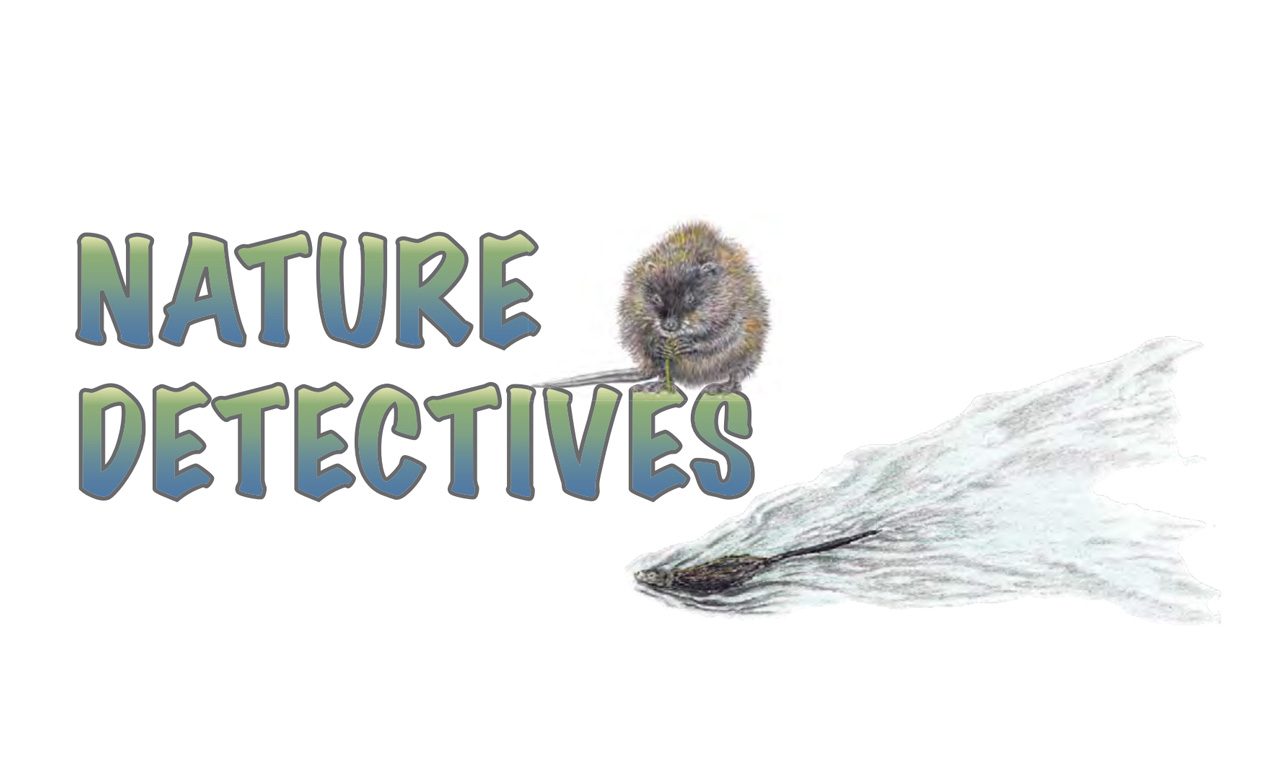Perhaps the first thing you notice is a small, v-shaped wave and ripples on top of the water. At the tip of the wave you detect a dark body paddling across the pond, creating those ripples. Beaver?
Then you get a glimpse of its tail. You might remember beavers have a roundish, flat, paddle-shaped tail, but this swimmer’s tail looks almost like a snake. So it’s not a beaver. What is it? Hmmmm.
Here are some hints. The animal’s name means “stinky rat,” and it lives the life of a beaver on a smaller scale. This furry creature was called musquash by the Algonquian people (who were the first Native American people encountered by settlers from England). The early white settlers called them “muskrats.” Muskrat is the common name still used today. Muskrats are not rats, and they are not beavers either.
Quite a Big Vole!
Beavers and muskrats and rats are all rodents (rodents are animals with continually growing front teeth), but the three are not close relatives. Rat family members stole aboard ships from Europe to get to the Americas. Beavers and muskrats are native rodents with very similar lifestyles, yet they too are in different families. Beavers are in the beaver family, and muskrats are voles.
Muskrats are by far the largest cousins in the vole family. Most voles are mouse-sized critters that are known for chewing runways through thick vegetation. Muskrats make trails through plants too, but they gnaw plants that grow in or near the water. Like all voles, muskrats have little ears, barely visible above their fur, but their watery living and their much larger size sets them apart from all other kinds of voles.
Continue Reading & Download the Print Edition
Nature Detectives Library
Every past issue of Nature Detectives can be found in the Nature Detectives Library!


